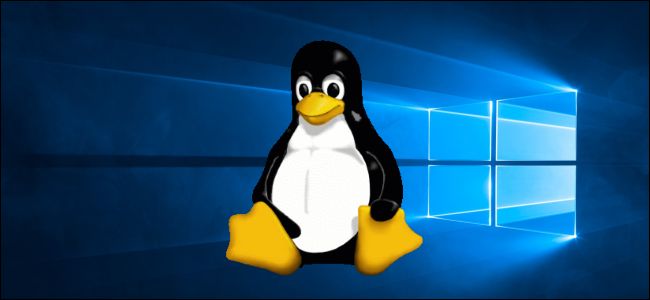The first thing that you simply will notice about Linux Red Hat (using the Gnome Interface) is that its tons like Windows. But that’s where the similarity ends. Linux requires an entirely new set of commands also as a replacement way of brooding about things.
For instance, in Windows, you’ll adjust monitor or screen properties by just a couple of keystrokes. With Linux, however, so as to regulate the monitor settings, you’ve got to run a program called Xconfigurator. And there’s no information anywhere on the way to do that. it’s one among these secret things that Linux users don’t be concerned about because “everyone knows the way to do it. Those folks changing from Windows to Linux have a requirement to understand this stuff.
Let me tell you the secret: you’ve got to be logged in as “Root” then you exit to the terminal. Now, this seems like a DOS shell, so Windows users aren’t getting too confused. Then at the # prompt type in Xconfigurator. Then you’re taken to a configuration program that needs you to recognize tons about your monitor and your video card. Most of that information is found within the users manual for the hardware, or from the manufacturer. you’ll get to know the name, model number, and manufacturer of the video card and therefore the monitor and you’ll get to know the refresh rate and vertical and horizontal frequency of the monitor. make certain that you simply have this information before you begin. then, you only fill out the shape and follow the instructions, it’s that straightforward from thereon.
Another well-kept secret is that you simply got to exit to the terminal so as to run any program that doesn’t have an icon on the desktop. That’s anything that does not specifically accompany Red Hat. Some programs will set themselves up with an icon if they’re installed within the right desktop interface. Linux has several different desktop interfaces, which is basically cool. Gnome may be a very Windows-like one. the sole flinch to Gnome is that some programs like StarOffice won’t put an icon on the Gnome interface. therefore the user gets to try to to it.
The first thing you would like to try to to is to locate the executable file for StarOffice, this is able to be a file called “soffice”. the simplest thanks to finding it’s to use the File Manager to locate it. Then make a note of the trail and attend Panel then New Launcher.
Type within the name of the program, e.g. Star Office within the Name field. Then in Comment field put within the text which will appear when the mouse hovers on the icon. Click on OK and therefore the icon appears on your panel (which resembles the taskbar in Windows).
Linux isn’t as hard because it would seem initially. Although they struggle to inform you that it’s very easy, that’s not entirely true either. If you recognize Unix, it’s easy. If you recognize Windows, it is a little hard initially, on the other hand, it is sensible. If you’re new computers then Linux may be a good program to find out first, because it’s so configurable and versatile. there’s without stopping to the chances with Linux.
Overview of the Linux IEEE-1394 Subsystem
What is a high-level driver?
In the GNU/Linux IEEE-1394 Subsystem high-level drivers are routines that register themselves to the ieee1394 module by calling the function hpsb_register_highlevel. This call passes a structure containing pointers to four functions (*add_host, *remove_host, *host_reset and *iso_receive) provided by the registering high-level driver. These functions are then called when the appropriate event occurs in the underlying system, eg. *add_host is called every time a new host (a 1394 interface card) is detected and initialized, and *iso_receive is called every time isochronous data is received from the low-level drivers.
When hpsb_register_highlevel is called, *add_host is immediately called for every host already known by the ieee1394 module.
High-level drivers can also register themselves as responsible for handling read/write/lock transactions for areas of the 1394 address space on the local hosts. To do so, they must call the function hpsb_register_addrspace. This call passes a structure containing the address range and four-pointers (*read, *write, *lock, and *lock64) provided by the registering high-level driver. These functions are then called when the appropriate event occurs in the underlying system, eg. *read is called when the system receives a read request for an address in the specified range.
If the subsystem receives a request for an address, for which no high-level driver has registered itself, a response code of resp_address_error is returned.
When calling the two mentioned registration functions, it is allowed to let some of the pointers be null pointers. If for example only *read was non-null in a hpsp_register_addrspace call, the address range in question will be “read-only” from the 1394 bus. Likewise, letting eg. the *iso_receive pointer in a hpsb_register_highlevel call be null will prevent the high-level driver from being called upon reception of isochronous data.
The 1394 standard uses a 64-bit address space, where the upper 16 bits represent the node-ID. High-level drivers register for the lower 48 bits of the address space. This means that a high-level driver will be called for request for the specified addresses on all the local hosts. The High-level driver can differentiate the handling of the hosts if required, as a reference to the host in question is passed along with the call.
1.4 Initializing
This section describes what happens when the modules are insmod’ed.
1.4.1 insmod ieee1394.o
The initialization function for this module is init_module in ieee1394_core.c. It only calls two functions, namely init_hpsb_highlevel and init_scr.
init_hpsb_highlevel is in highlevel.c. It prepares two standard Linux doubly linked lists, hl_drivers, and addr_space, that are used to handle the high-level drivers. hl_drivers is a list of the drivers that have registered themselves using hpsb_register_highlevel. addr_space is a list of the address ranges, for which high-level drivers have been registered. An address can only be handled by one high-level driver. Initially, both these lists are empty.
init_csr from csr.c is called after the high-level handling has been set up. init_csr registers a high-level driver “standard registers” that handles the standard command and status registers, the config-ROM, the topology map and the speed map. This registration is done using hpsb_register_highlevel and hpsb_registeraddrspace.
1.4.2 insmod <lowleveldriver>
When a low-level driver is inserted, it calls hpsb_register_lowlevel from its init_module routine. Along with the call it passes a structure containing (amongst others) pointers to functions that are used for detecting, initializing and releasing hosts and for transmitting packets. hpsb_register_lowlevel is a function from hosts.c. It adds the low-level driver to its list of drivers (the list is called templates), and then detects, registers and initializes all hosts (1394 adapters) the low-level driver knows about.
After this, the subsystem is up and running. You should be able to see some messages from syslogd now (on my machine it is /var/log/messages). But to access the raw bus from userspace we still need one more module.
1.4.3 insmod raw1394
raw1394 registers itself as a high-level driver using hpsb_register_highlevel when inserted (hpsb_register_addrspace is not called, as raw1394 does not handle any portion of the 1394 address space). Then it calls register_chrdev to connect to /dev/raw1394, the character device used by libraw1394 to connect to raw1394 fra userspace.
Now the GNU/Linux IEEE-1394 Subsystem is ready to be used by applications using the libraw1394 interface, eg. gscanbus or Gnome1394.
When you want to make a strong Oracle DBA career then you should be aware of database services and other database technology. Without having knowledge of Oracle internals, Oracle performance tuning, and skill of Oracle database troubleshooting you can’t be an Oracle DBA expert. This expert DBA Team club blog always provides you latest technology news and database news to keep yourself up to date. You should need to be aware of Cloud database technology like DBaaS. All Oracle DBA tips are available in a single unique resource at our orageek. Meanwhile, we are also providing some sql tutorials for Oracle DBA. This is the part of Dbametrix Group and you would enjoy more advanced topics from our partner resource.






